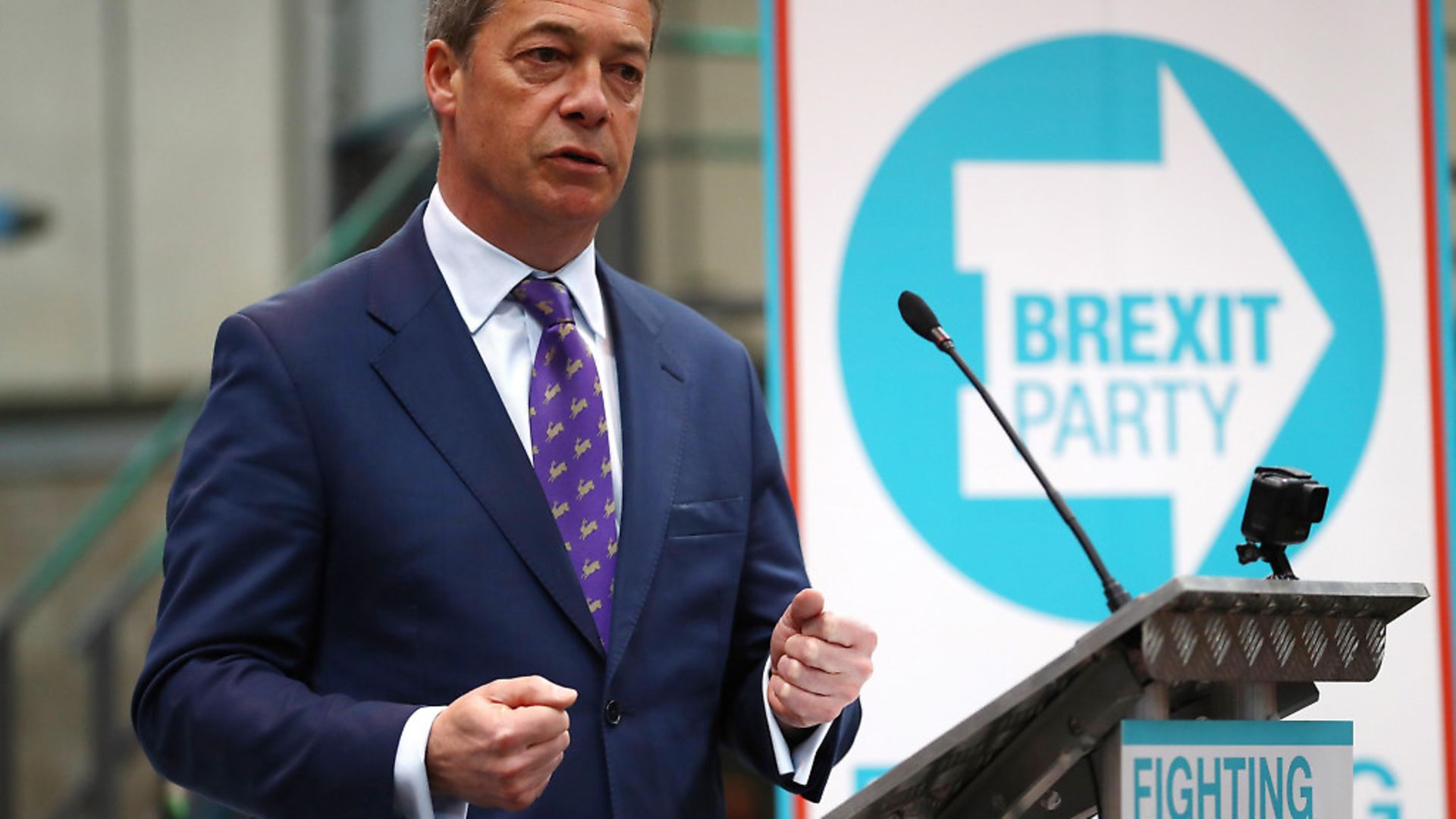
As the European elections loom, the leader of the Brexit Party is now the second most popular candidate to be the next Tory leader, writes ANDREW ADONIS.
When I suggested a year ago that Nigel Farage had become leader of the Conservative party, this was regarded as a slightly too clever joke. People aren’t laughing now. Even some Conservative MPs have begun briefing that they will vote for Farage’s Brexit party in the European elections on May 23.
A Survation poll of Tory councillors last weekend found that 40% intended to vote for the Brexit Party and – wait for it – that Farage is now their second most popular candidate to be next Tory leader, narrowly behind Boris Johnson.
The two parties have become almost interchangeable. When I asked why a particular person appeared in the list of Farage MEP candidates this week, a friend of the candidate said: ‘He tried the Tories and found it too slow and did not have connections.’
Richard Tice, chairman of the Brexit Party and Farage’s latest alter ego, is straight out of the Tories. Only last year he was trying for the Tories’ London mayoral nomination. Meanwhile, comrades from Farage’s last UKIP venture have joined the Tories en masse, including the ex-UKIP candidate for Beaconsfield – the cradle of modern Conservatism as constituency of Benjamin Disraeli – who launched the successful coup against Dominic Grieve in his constituency association last month.
In my book Saving Britain, with Will Hutton, we suggested that Farage became de facto leader of the Conservative party on June 24, 2016, the day after the referendum, when Brexit ‘won’. This followed years of successful UKIP mobilisation by Farage which terrified the Tories and David Cameron in particular.
The UKIP victory in the last Euro elections in 2014 was the defining moment, convincing Cameron to put a Brexit referendum at the heart of the 2015 Conservative manifesto after a decade of policy moves towards Farage, beginning with the withdrawal of Tory MEPs from the centre-right EPP grouping in the European parliament, one of Cameron’s early acts on becoming Tory leader in 2005.
In view of recent developments I would revise the date slightly, but significantly. Farage actually became Tory leader a few weeks later, on July 11, 2016, when Theresa May became Leader In Name Only.
In retrospect it is clear that May had two possible courses of action after the 2016 referendum. She could have pursued a ‘half-in, half-out strategy’ akin to Norway and Switzerland, and indeed Britain itself before 1973.
After Johnson, Gove and Leadsom all imploded in quick succession, May could have followed Norway had she made it, immediately and decisively, the policy of her government and party. Labour would probably have supported her, leaving freedom of movement the only genuinely difficult hurdle to cross in terms of securing a viable Brexit deal in Brussels and Westminster. There would then have been no need for an early election. By the time of the next election in 2020, Brexit would have been a done deal and Farage safely in Trump’s America as a Fox News anchor.
Instead, May chose to define her policy in a way that was both extreme and unviable. The extreme bit was leaving the customs union and the single market. This was probably unviable too, but her added Faragist flourish of ‘no deal is better than a bad deal’ was absolutely unviable, as the last month has proved, and delivered herself into the hands of Jacob Rees-Mogg and fellow Farage surrogates in the ERG.
All these moves were made from fear of the influence of Faragists in the Tory party at large, a continuation of the appeasement strategy which had got Cameron into the Brexit catastrophe in the first place.
To compound these initial Faragist moves, two years ago the Leader In Name Only called an early election which rendered her also Prime Minister In Name Only. After the 2017 election, May again had a choice. She could, at this 11th hour, have sought a compromise agreement with Jeremy Corbyn on Norway/Swiss lines. Many of us expected this and were astonished when instead she stuck to her Faragist ‘red lines’ and made herself a full hostage of the ERG and the DUP. Worse, on this basis there was no viable deal that could be agreed with Barnier, Varadkar and Merkel. The rest is history.
So today, Farage is lord of all he surveys on the right of British politics. He has only two problems. His Brexit policy isn’t actually do-able. It is the poll tax on steroids. Partly in consequence, and partly because it is his instinct as an irresponsible populist, he constantly shies away from taking responsibility. Faced with unviability, he launched an even more impossibilist new party in the latest adventure of his political Ponzi career. Let’s hope May 23 is the moment the inverted Ponzi pyramid collapses.









